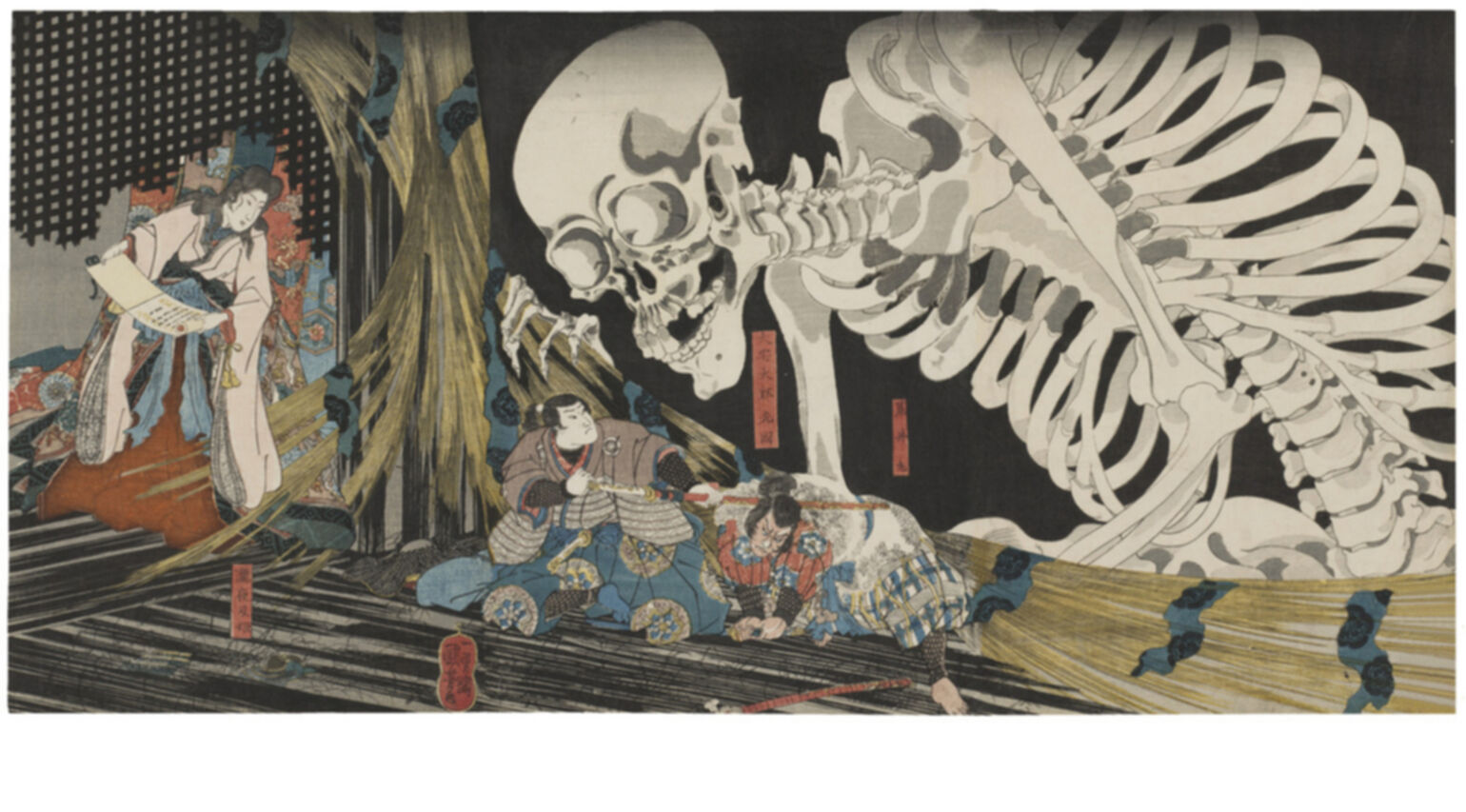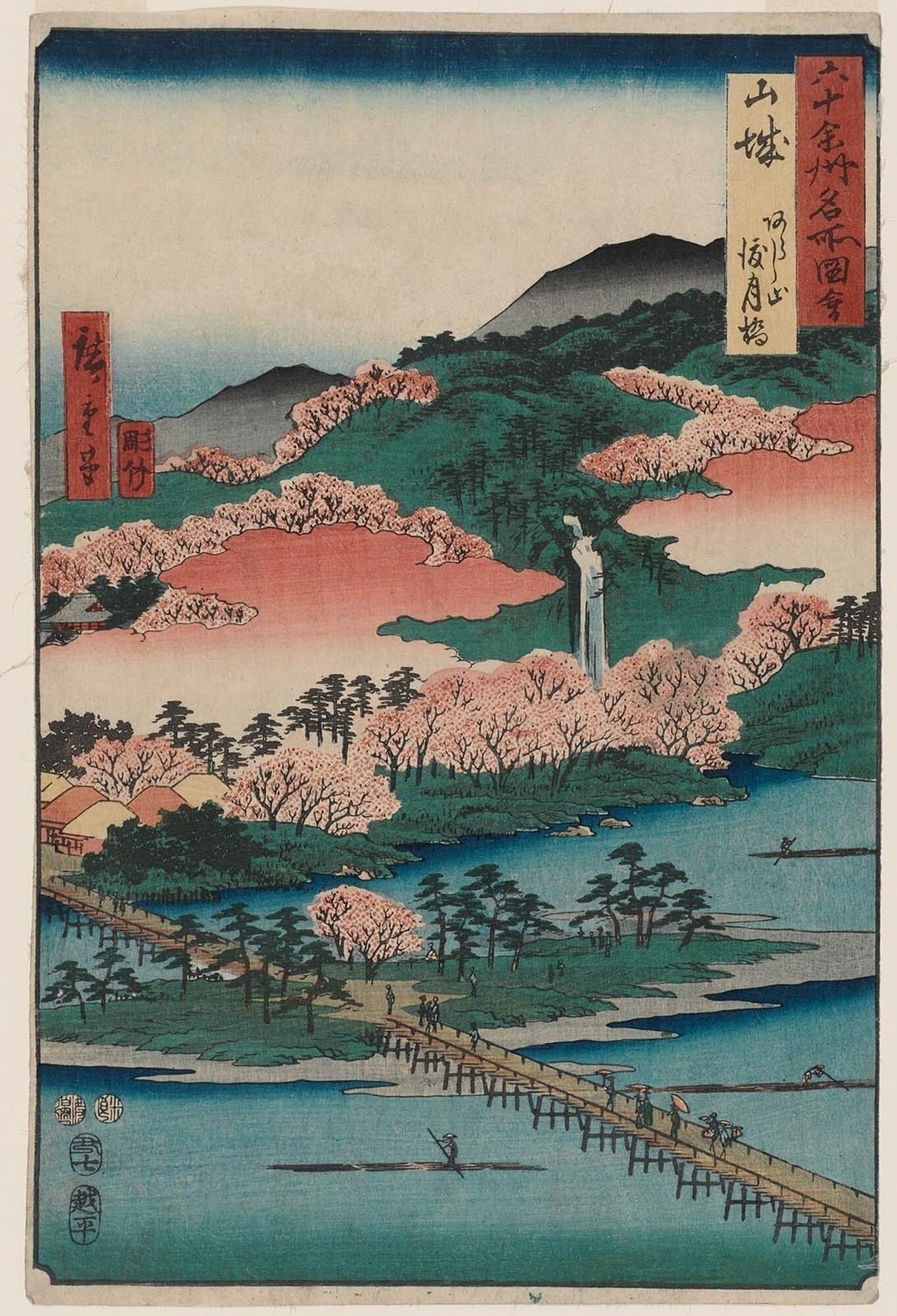
Japanese art at UNIQLO: a brief history
Explore our UT collections of centuries-old Edo-era ukiyo-e prints and revisit the masterpieces of artists like Hokusai or Hiroshige. These historical designs flourished during the Edo period in Japan. And from the 1860s onward, they became popular among European artists and art collectors, giving rise to their continued influence on Western visual culture.
Here’s a small overview of Japanese art at UNIQLO, through ukiyo-e woodblock prints that you can discover in our UT collections.
A new imagery
Ukiyo-e is a Japanese art practice that appeared when Edo (now known as Tokyo) was established as the major political and commercial centre of Japan during the 17th century. This new form of imagery first depicted moments of everyday life, cosmopolitan fashion, and attractions of the city.
The practice of ukiyo-e thrived during the Edo period (1603-1868), when its range of subjects expanded. Two major themes arose: landscapes and historical scenes.
Katsushika Hokusai - Reflection in Lake at Mikasa in Kai Province

A peaceful view of Mount Fuji, from Hokusai's iconic series Thirty-Six Views of Mount Fuji. This series celebrates Japan’s beautiful landscapes with, at its focal point, Mount Fuji. Each print depicts the mountain from a different angle, location or under a different weather condition.
Utagawa Kuniyoshi - Takiyasha the Witch and the Skeleton Spectre

Kuniyoshi was known for his depictions of famous samurai and legendary heroes, but also illustrated mystical scenes such as this one. This composition depicts the story of princess Takiyasha, summoning ghosts of fallen soldiers to turn them into a gigantic skeleton, after the rebellion started by her father against the court in Kyoto failed.
The floating world
The paintings and prints of this art movement echoed the new freedom of expression and lifestyle that emerged in Edo at the time. The idea of a “floating world” came to life with the word ukiyo-e (“uki” = floating, “yo” = world, “e” = picture), described in detail by the author Asai Ryoi:
…living only for the moment, turning our full attention to the pleasures of the moon, the snow, the cherry-blossoms and the maple-leaves, singing songs, drinking wine, and diverting ourselves just in floating, floating...this is what we call ‘ukiyo’..."
- Asai Ryoi, “Tales of the Floating World” (in Japanese “Ukiyo Monogatari”), c. 1661.
Before ukiyo took the above meaning, it was linked with the Buddhist idea of the transitory meaning of life but was soon overthrown by Asai Ryoi’s more optimistic definition. The “floating world” became synonymous with a joyful way of life, depicted in the delicate colours and detailed lines of the Edo period woodblock prints.
Katsushika Hokusai - View from the Other Side of Mount Fuji from the Minobu River

Another print from Hokusai's series Thirty-six Views of Mount Fuji. This series perfectly reflects the fascination that Mount Fuji held for Hokusai and other artists at the time.
Utagawa Hiroshige - The Temple of the Golden Pavilion

A woodblock print from Hiroshige's series Famous Places in Kyoto.
Woodblock prints: accessible to all
The great thing about woodblock prints was that they could be mass produced, and single sheet prints could be sold at inexpensive prices, thanks to the innovative technologies used at the time. Although woodblock prints were a work of art, the artists themselves were only responsible for drawing the designs. Once the design was created, professional block cutters carved wooden blocks according to the shape needed. For colour prints, one block was needed for each colour. Professional printers would then make prints from those blocks, before handing them to publishers.
Imagery of the delights of city life became easily available to the general public. It was then possible to collect portraits of fashionable women, kabuki (theatre) actors or even Sumo wrestlers.
Toshusai Sharaku - Kabuki Actor Otani Oniji III

Sharaku was well known for his portraits of kabuki actors.
Wearable art
At UNIQLO, we welcome several iconic ukiyo-e woodblock prints into our UT collections. Using T-shirts and other clothes as a blank canvas we enabled traditional Japanese art to become a part of our daily lives, through our wardrobes. We have been collaborating with the Boston Museum of Fine Arts since 2017, using their extensive ukiyo-e art collection to create wearable art, a perfect way to make this part of Japanese culture accessible to all.
Utagawa Hiroshige Shirt

Utagawa Hiroshige
Thanks to this partnership, we created the Edo Ukiyo-e UT collection. Discover Utagawa Hiroshige’s series The Fifty-three Stations of the Tōkaidō, printed onto short sleeved, open collared shirts. These mountain and seaside motifs show Hiroshige’s talent for capturing the beauty of Japanese landscapes. His work inspired Vincent van Gogh and Claude Monet some years later.
Utagawa Hiroshige Shirt

Utagawa Hiroshige - Yamashiro Province: The Togetsu Bridge in Mount Arashi

A woodblock print from another of Hiroshige's series - Pictures of Famous Places in the Sixty-odd Provinces. This series celebrates landscapes from several of Japan's provinces.
Katsushika Hokusai
Katsushika Hokusai’s woodblock prints also influenced artists beyond Japan. His iconic work Under the Wave off Kanagawa (The Great Wave) is a motif well-known all around the globe. The expressive depiction of three small fishing boats riding gigantic, furious waves toward Mount Fuji, tiny in the background, became Japan’s most famous artwork. We dedicated a UT collection to the artist called Hokusai Colours, where you can find several prints of The Great Wave, and also beautiful views of Mount Fuji.
Katsushika Hokusai - Under the Wave off Kanagawa

Hokusai's most iconic print, also part of his series Thirty-Six Views of Mount Fuji.
Katsushika Hokusai - South Wind, Clear Dawn

A beautiful view of Mount Fuji from Thirty-Six Views of Mount Fuji, that you can discover in our UT collection!